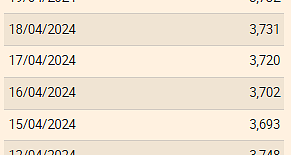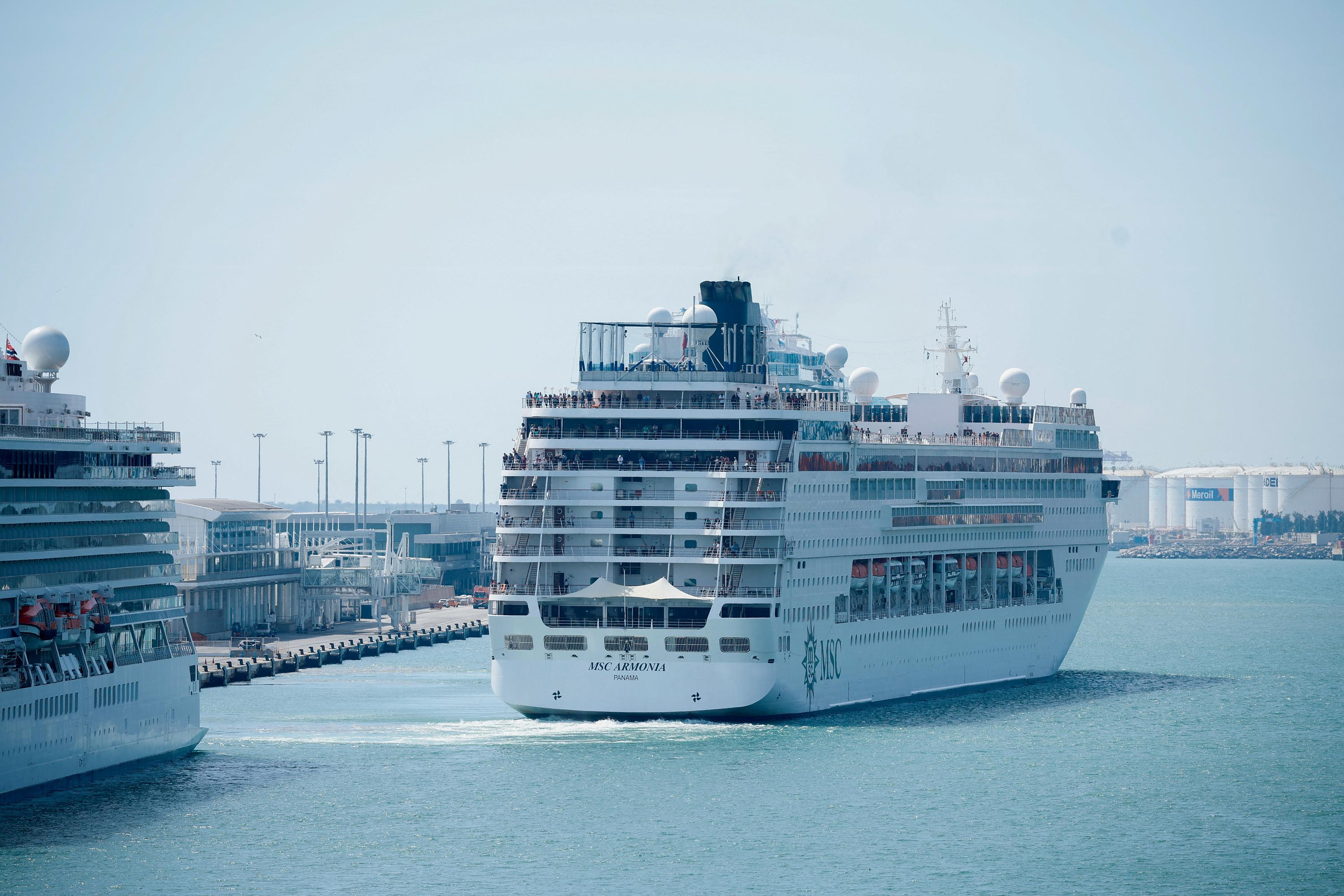Tons of clothes litter the arid hillsides surrounding the municipality of Alto Hospicio, in the Tarapaca region, some 1,800 km north of Santiago.
In the neighboring city of Iquique, thousands of dismantled cars from the United States, Japan or Korea pile up, while in other areas of this desert of more than 100,000 km2, the landscape is disfigured by hundreds of tires.
Chile has specialized for more than forty years in the second-hand clothing trade, between clothes thrown away by consumers, destocking and charitable works from all over the world.
According to Chilean customs, in 2021, some 46,285 tons of used clothing entered the country.
Clothes, like cars, enter through the free zone in the port of Iquique. They are intended for the Chilean second-hand market or that of other Latin American countries.
Most cars are re-exported to Peru, Bolivia or Paraguay. However, many end up in the streets of Iquique or on the sides of the surrounding hills.
More than half of the clothes and shoes produced, at low cost and on the chain, mainly in Asia, end up scattered in the desert because of the congestion of the circuit.
Regularly, these wild dumps are set on fire in order to reduce the nuisances, however causing thick clouds of toxic smoke.
"These fires are very toxic, because what emanates from them is burnt plastic," said Paulín Silva, a lawyer who in March filed a complaint against the Chilean state with a court dedicated to environmental issues. .
- "Environmental risk" -
Originally from Iquique, Me Silva denounces in particular the passivity of the State in the face of these landfills which, she assures, constitute "an environmental risk" and "a danger for human health".
"It's the unscrupulous people from all over the world who come to dump their waste here", plague with AFP Patricio Ferreira, the mayor of Alto Hospicio, one of the poorest cities in Chile.
“We cleaned up once and they are polluting us in another area,” he complains, saying he is helpless in the face of the problem. "We feel abandoned. We feel that our land is being sacrificed," he says indignantly.
Although considered one of the driest deserts in the world - with rainfall that does not reach 20 millimeters per year in some areas - the Atacama is home to a unique ecosystem.
In its driest part, near the coastal town of Antofagasta, scientists, including Chilean biologist Cristina Dorador, have discovered extreme forms of life: microorganisms capable of living almost without water or nutrients despite solar radiation. extreme.
These micro-organisms could hold the secrets of evolution and survival on earth, but also on other planets, they believe.
- A "very fragile" ecosystem -
In some areas near the coast, the mist allows vegetation and vertebrate animals to develop, explains Pablo Guerrero, professor of botany at the University of Concepcion, and researcher at the Institute of Ecology and Biodiversity (IEB ).
"The existence of life in these places is, in a way, a fortuitous event", he indicates, considering that this is a region where the ecosystem is "very fragile". "Any change or decrease in the precipitation and haze regime immediately has consequences for the species that live there".
Dozens of purple-dominant flower species bloom when rainfall is above average. Their seeds, buried under the sand, can survive for decades while waiting for a minimum of water to germinate and then flower.
Due to climate change, but also to pollution and the advance of cities, certain species of cacti have however disappeared.
"There are cacti species that are considered extinct. Unfortunately, this is a phenomenon that we see on a large scale and with systematic deterioration in recent years," says Guerrero.
The vast majority of people see the Atacama Desert as simple "bare hills" where the "place of mining operations", regrets Carmen Serrano, president of the environmental organization "Raices Endémicas".
This vast expanse, sometimes rocky, sometimes sandy, is home to the largest copper mines in the world, as well as lithium mines, two activities that consume a lot of groundwater.

 The Euribor today remains at 3.734%
The Euribor today remains at 3.734% Germany: the trial of an AfD leader, accused of chanting a Nazi slogan, resumes this Tuesday
Germany: the trial of an AfD leader, accused of chanting a Nazi slogan, resumes this Tuesday New York: at Columbia University, the anti-Semitic drift of pro-Palestinian demonstrations
New York: at Columbia University, the anti-Semitic drift of pro-Palestinian demonstrations What is Akila, the mission in which the Charles de Gaulle is participating under NATO command?
What is Akila, the mission in which the Charles de Gaulle is participating under NATO command? What High Blood Pressure Does to Your Body (And Why It Should Be Treated)
What High Blood Pressure Does to Your Body (And Why It Should Be Treated) Vaccination in France has progressed in 2023, rejoices Public Health France
Vaccination in France has progressed in 2023, rejoices Public Health France Food additives suspected of promoting cardiovascular diseases
Food additives suspected of promoting cardiovascular diseases “Even morphine doesn’t work”: Léane, 17, victim of the adverse effects of an antibiotic
“Even morphine doesn’t work”: Léane, 17, victim of the adverse effects of an antibiotic MEPs validate reform of EU budgetary rules
MEPs validate reform of EU budgetary rules “Public Transport Paris 2024”, the application for Olympic Games spectators, is available
“Public Transport Paris 2024”, the application for Olympic Games spectators, is available Spotify goes green in the first quarter and sees its number of paying subscribers increase
Spotify goes green in the first quarter and sees its number of paying subscribers increase Xavier Niel finalizes the sale of his shares in the Le Monde group to an independent fund
Xavier Niel finalizes the sale of his shares in the Le Monde group to an independent fund Owner of Blondie and Shakira catalogs in favor of $1.5 billion offer
Owner of Blondie and Shakira catalogs in favor of $1.5 billion offer Cher et Ozzy Osbourne rejoignent le Rock and Roll Hall of Fame
Cher et Ozzy Osbourne rejoignent le Rock and Roll Hall of Fame Three months before the Olympic Games, festivals and concert halls fear paying the price
Three months before the Olympic Games, festivals and concert halls fear paying the price With Brigitte Macron, Aya Nakamura sows new clues about her participation in the Olympics
With Brigitte Macron, Aya Nakamura sows new clues about her participation in the Olympics Skoda Kodiaq 2024: a 'beast' plug-in hybrid SUV
Skoda Kodiaq 2024: a 'beast' plug-in hybrid SUV Tesla launches a new Model Y with 600 km of autonomy at a "more accessible price"
Tesla launches a new Model Y with 600 km of autonomy at a "more accessible price" The 10 best-selling cars in March 2024 in Spain: sales fall due to Easter
The 10 best-selling cars in March 2024 in Spain: sales fall due to Easter A private jet company buys more than 100 flying cars
A private jet company buys more than 100 flying cars This is how housing prices have changed in Spain in the last decade
This is how housing prices have changed in Spain in the last decade The home mortgage firm drops 10% in January and interest soars to 3.46%
The home mortgage firm drops 10% in January and interest soars to 3.46% The jewel of the Rocío de Nagüeles urbanization: a dream villa in Marbella
The jewel of the Rocío de Nagüeles urbanization: a dream villa in Marbella Rental prices grow by 7.3% in February: where does it go up and where does it go down?
Rental prices grow by 7.3% in February: where does it go up and where does it go down? Europeans: “All those who claim that we don’t need Europe are liars”, criticizes Bayrou
Europeans: “All those who claim that we don’t need Europe are liars”, criticizes Bayrou With the promise of a “real burst of authority”, Gabriel Attal provokes the ire of the opposition
With the promise of a “real burst of authority”, Gabriel Attal provokes the ire of the opposition Europeans: the schedule of debates to follow between now and June 9
Europeans: the schedule of debates to follow between now and June 9 Europeans: “In France, there is a left and there is a right,” assures Bellamy
Europeans: “In France, there is a left and there is a right,” assures Bellamy These French cities that will boycott the World Cup in Qatar
These French cities that will boycott the World Cup in Qatar Serie A: Bologna surprises AS Rome in the race for the C1
Serie A: Bologna surprises AS Rome in the race for the C1 Serie A: Marcus Thuram king of Italy, end of the debate for the position of number 9 with the Blues?
Serie A: Marcus Thuram king of Italy, end of the debate for the position of number 9 with the Blues? Milan AC-Inter Milan: Thuram and Pavard impeccable, Hernandez helpless… The tops and flops of the derby
Milan AC-Inter Milan: Thuram and Pavard impeccable, Hernandez helpless… The tops and flops of the derby Ligue 2: Auxerre leader, Bordeaux in crisis, play-offs... 5 questions about an exciting end of the season
Ligue 2: Auxerre leader, Bordeaux in crisis, play-offs... 5 questions about an exciting end of the season


















